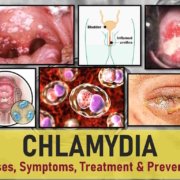Candida Auris: New Deadly Fungal Infection: Symptoms, Causes & Treatment
In recent years, a new fungal infection, Candida auris has emerged as a significant public health threat, particularly in hospital settings. This multidrug-resistant yeast, first identified in 2009, is known for causing severe invasive infections with high mortality rates. The pathogen has since been reported in over 20 countries across five continents. Managing Candida auris is particularly challenging due to its resistance to multiple antifungal drug classes, its tendency to be misidentified as other yeasts by standard identification methods, and its ability to colonize patients for extended periods and persist in healthcare environments. These factors facilitate its spread between patients and set it apart from most other Candida species.
Fungal Infections: A Silent Epidemic
Despite being a major health concern, fungal infections often fly under the radar in public health discussions. Here are some eye-opening facts:
- Fungal infections cause more deaths annually than malaria and breast cancer combined.
- Over one million people die from fungal infections each year.
- There is a notable lack of vaccines and effective treatments for many fungal infections.
These statistics highlight the urgent need for increased attention and resources dedicated to combating fungal infections. Scientists and healthcare professionals are calling for improved treatment options and a greater focus on this often-overlooked area of medicine.
What is Candida auris?
Candida auris is a species of yeast that was first identified in 2009. It belongs to a group of fungi called Candida, which includes other species that can cause infections in humans. However, Candida auris stands out due to its ability to cause severe infections and its resistance to multiple drugs.
Key facts about Candida auris:
- It was first discovered in the ear canal of a patient in Japan (hence the name “auris,” which means “ear” in Latin).
- Since its discovery, it has spread rapidly around the world.
- It can cause serious invasive infections, particularly in hospital settings.
- Candida auris is resistant to multiple classes of antifungal drugs, making infections difficult to treat.
The Global Spread of Candida auris
Since its initial discovery, Candida auris has been reported in various parts of the world, including: Asia, South America, Europe, North America and Africa.
This rapid global spread is particularly concerning because Candida auris has been linked to significant outbreaks in hospitals. In these settings, it often causes:
- Bloodstream infections
- Wound infections
- Catheter-related infections
The prevalence of Candida auris has been increasing at an alarming rate. For example:
- In Europe, the number of reported cases has risen significantly in recent years.
- In the United States, cases more than tripled from 476 in 2019 to 1,471 in 2021.
- In regions like South Africa and India, Candida auris has become a major cause of candidemia (a type of bloodstream infection).
Candida auris in United States
The first case of Candida auris in the U.S. was identified in 2013 but was only reported retrospectively in 2016. By the end of 2021, over 3,000 clinical cases had been documented in the country, marking a 95 percent increase from the previous year. Additionally, the number of drug-resistant cases in 2021 was approximately three times higher than in each of the two preceding years. According to Rupp, Candida auris has now been identified in most major metropolitan areas in the U.S., and it is likely present even in states where it hasn’t been officially reported. States with the highest number of infections include California, Nevada, Texas, Illinois, Florida, and New York. Most recently, a Candida auris outbreak in January 2024 at a Seattle hospital affected four people, marking the first known outbreak in Washington State.
Why is Candida auris So Dangerous?
Several factors contribute to the threat posed by Candida auris:
- Drug Resistance: One of the most troubling aspects of Candida auris is its high level of resistance to antifungal drugs. This includes resistance to Azoles, Amphotericin B and Echinocandins. These are the three main classes of antifungal medications used to treat fungal infections. Some strains of Candida auris are even pan-resistant, meaning they’re resistant to all three classes of drugs. This severely limits treatment options and makes infections extremely difficult to manage.
- Difficulty in Diagnosis: Candida auris can be challenging to identify using traditional diagnostic methods. This often leads to misdiagnosis and inappropriate treatment, which can worsen the patient’s condition and allow the infection to spread.
- Persistence in the Environment: Candida auris can survive on surfaces for long periods, making it difficult to eliminate from hospital environments. This persistence contributes to its ability to cause outbreaks in healthcare settings.
- Ability to Spread Easily: Candida auris can spread from person to person in healthcare settings, unlike many other Candida species. This makes it particularly dangerous in hospitals and long-term care facilities.
Impact of COVID-19 on Candida auris Spread
The COVID-19 pandemic has had a significant impact on the spread of Candida auris. Several factors have contributed to this:
- Increased Risk in COVID-19 Patients: Patients with severe COVID-19 infections are at higher risk of developing fungal infections, including those caused by Candida auris. This is due to their weakened immune systems and the invasive medical procedures they often require.
- Overwhelmed Healthcare Systems: During the height of the pandemic, many healthcare systems were stretched to their limits. This may have led to compromised infection control practices, creating opportunities for Candida auris to spread.
- Use of Broad-Spectrum Antibiotics: The widespread use of antibiotics in COVID-19 patients may have created conditions favorable for fungal infections to develop.
- Outbreaks in COVID-19 Wards: Several outbreaks of Candida auris were reported in hospitals treating COVID-19 patients. The combination of severely ill patients, invasive medical devices, and potentially compromised infection control created a perfect storm for fungal infections to thrive.
The Evolution and Spread of Candida auris
The rapid global emergence of Candida auris has puzzled scientists and raised important questions about its evolution and spread. Unlike many infectious diseases that spread from a single source, research suggests that Candida auris may have originated independently in different regions around the world.
Key insights into the evolution of Candida auris:
- Multiple Distinct Clades: Genomic studies have revealed that Candida auris consists of several genetically distinct groups, called clades. Each clade has unique characteristics and is associated with different geographical areas.
- Independent Emergence: These clades likely emerged independently in different parts of the world, rather than spreading from a single point of origin. This suggests that certain environmental or human factors may have triggered the emergence of Candida auris in multiple locations.
- Rapid Adaptation: Candida auris has shown a remarkable ability to adapt to various environments. It can tolerate high-salinity and high-temperature conditions, which may have contributed to its success in hospital settings and its global spread.
- Potential Environmental Reservoirs: Some researchers have suggested that Candida auris may have existed in the environment (such as in wetlands or on plants) before emerging as a human pathogen. Changes in environmental conditions or human activities may have prompted its transition to infecting humans.
Candida Auris Symptoms
The symptoms of a Candida auris infection, medically termed candidiasis, can be tricky to identify. They vary depending on which part of the body is affected. To complicate matters further, since this infection often occurs in clinical settings and in patients already dealing with other health issues, the signs can be easily overlooked.
Here are some common ways Candida auris can manifest:
- Ear Infection:
- Sharp or dull pain in the ear canal
- A feeling of “fullness” in the ear
- Muffled hearing
- Ear drainage
- Nausea
- Wound Infection:
- Inflammation and redness around the wound site
- Discharge of yellowish or orange pus
- Increased tenderness around the wound
- Delayed healing
- Fever
- Blood Infection (most dangerous):
- Fever
- Chills
- Sweats
- Pain
- General feeling of tiredness and malaise
In some cases, Candida auris has been found in urine samples, though it’s not yet clear how much risk this poses for bladder infections.
It’s important to note that if left untreated, severe Candida auris infections can lead to coma. Alarmingly, more than one-third of serious infections that reach the bloodstream or affect the brain or heart can be fatal.
Candida auris Infection Causes
Unlike most other Candida species, Candida auris has a remarkable ability to spread from person to person. Here’s what you need to know about its transmission:
- Not a typical resident: Unlike many other Candida species, Candida auris is not normally found in the human gut.
- Skin preference: It particularly likes to colonize skin, especially in the armpit and groin areas.
- Quick colonization: Candida auris can start living on a person within days to weeks of exposure.
- Long-term presence: Once it colonizes a person, it can stick around for months or even indefinitely.
- Environmental spread: Candida auris can spread through contact with contaminated surfaces and objects. It’s been found on various surfaces in healthcare settings, including:
- Patient rooms
- Hallways
- Chairs and beds
- Medical equipment like ECG leads, blood pressure cuffs, and ventilators
- Persistence: Studies show that Candida auris can survive on surfaces for up to 4 weeks, making thorough cleaning crucial.
Candida auris Prognosis
The outlook for those with invasive Candida auris infections is generally more serious compared to other Candida species:
- Mortality rate: The death rate from Candida auris infections ranges from 30% to 72%, depending on various factors.
- Affecting all ages: Infections have been reported in premature babies up to elderly individuals.
- Better outcomes in children: Younger patients tend to have a higher chance of survival.
- Early treatment is key: Quickly identifying Candida auris and starting appropriate antifungal treatment improves survival rates.
Potential Complications
Candida auris infections can lead to various complications, depending on how widespread the infection is and the patient’s overall health. Here are some possible complications:
- Bloodstream infection: This is the most common serious form of Candida auris infection.
- Spread to other organs: The infection can travel through the blood to affect different parts of the body, including: Kidneys, Heart, Lungs, Eyes, Brain and Liver
- Sepsis: A severe, potentially life-threatening response to infection that can lead to organ failure.
- Multi-organ failure: In severe cases, multiple organs may stop functioning properly.
Who’s at Risk?
Although Candida auris infections have been on the rise, it’s important to remember that they’re still relatively rare. Most healthy adults are unlikely to contract candidiasis. However, certain factors can increase the risk:
- Recent surgery
- Diabetes
- Use of broad-spectrum antibiotics
- Use of antifungal medications
These risk factors are similar to those for other types of Candida infections. However, it’s worth noting that our understanding of Candida auris is still evolving, and researchers are continually learning more about this emerging threat.
Preventing and Controlling Candida auris
Given the serious nature of Candida auris infections, prevention is crucial. Here are some key steps:
- Practice good hand hygiene: Wash your hands thoroughly and frequently, especially in healthcare settings.
- Be aware in healthcare environments: If you’re in a hospital or long-term care facility, don’t hesitate to ask about their Candida auris prevention measures.
- Inform healthcare providers: If you know you’ve been exposed to Candida auris, make sure to tell your healthcare providers.
- Follow isolation procedures: If you’re diagnosed with Candida auris, follow all isolation and contact precautions as directed by your healthcare team.
Treatment Options for Candida auris Infections
Treating Candida auris infections is challenging due to its resistance to multiple antifungal drugs. Current treatment approaches include:
- First-Line Treatment:
- Echinocandins (such as caspofungin and micafungin) are currently recommended as the first-line treatment for Candida auris infections.
- However, resistance to echinocandins is emerging in some strains of Candida auris.
- Alternative Treatments:
- In cases where echinocandins are not effective, liposomal amphotericin B may be used.
- This drug can have significant side effects and is typically reserved for severe cases or when other treatments have failed.
- Combination Therapies:
- Researchers are exploring the use of multiple antifungal drugs in combination to treat resistant Candida auris infections.
- This approach may help overcome drug resistance and improve treatment outcomes.
- New Antifungal Agents:
- Several new antifungal drugs are currently in development, including rezafungin and ibrexafungerp.
- These drugs may offer additional treatment options for Candida auris and other resistant fungal infections in the future.
- Supportive Care:
- In addition to antifungal treatment, patients with Candida auris infections often require supportive care to manage symptoms and complications.
- This may include intravenous fluids, pain management, and treatment of any underlying conditions.
Conclusion
The rise of Candida auris serves as a wake-up call to the medical community and the public about the growing threat of fungal infections. By understanding the symptoms, causes, and risk factors associated with this infection, we can better protect ourselves and our loved ones. If you’re in a healthcare setting or have any of the risk factors mentioned, don’t hesitate to discuss your concerns with your healthcare provider. They can provide guidance on prevention strategies and early detection measures.
Remember, maintaining good hygiene practices, such as regular handwashing, is one of the best ways to protect yourself from various infections, including Candida auris. Stay informed, stay vigilant, and prioritize your health. Always consult with healthcare professionals for personalized advice and up-to-date information on managing and preventing Candida auris infections.










